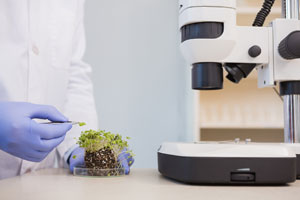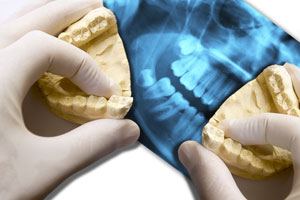Can a chiropractor serve as an expert witness? In cases involving injuries or conditions that chiropractors are qualified to treat, the answer is clearly “yes.” Like any other expert, however, chiropractors may offer only those opinions that they are qualified to render. A recent decision by the U.S. Court of Appeals for the Fifth Circuit concluded that the district court should not have allowed a chiropractor to offer medical opinions without assessing his qualifications to do so.
Plaintiff’s Claim
Due to a diabetic condition known as “peripheral neuropathy,” David Carlson began to lose sensation in his feet. He visited a chiropractor who had been promoting treatment for that condition with a ProNeuroLight device. The manufacturers of the device claim it uses infrared light to generate heat that dilates blood vessels and promotes circulation by increasing the presence of nitrous oxide in the affected area.
Within 48 hours after he was treated, Carlson developed ulcers on the bottom of his heels. His diabetic podiatrist determined that the ulcers were caused by burns. The burns caused a bone infection that required prolonged hospitalization, the eventual amputation of one leg below the knee, and the amputation of Carlson’s heel on the other foot.
Carlson sued the manufacturer of the ProNeuroLight device (Light Emitting Designs, Inc.) and its distributor (Bioremedi Therapeutic Systems, Inc.). Carlson based the products liability lawsuit on claims that the device was defectively designed and manufactured and that it was marketed without appropriate warnings to patients.
A key question during the trial was whether Carlson’s ulcers were caused by burns from the device or whether they were caused by his diabetes. The only witness called by the defense during the five-day trial was Dr. Lance Durrett, the chiropractor whose staff treated Carlson with the ProNeuroLight device. The jury found in favor of the defendant companies and the court dismissed Carlson’s case.
Chiropractor’s Testimony
Before the trial, Carlson filed a motion to exclude Dr. Durrett’s testimony on the ground that he was not qualified to render the opinions he was expected to give. The court denied that motion without a hearing.
Dr. Durrett testified that the wounds on Carlson’s heels looked like diabetic ulcers. He disagreed with a plaintiff’s witness who testified that they were burns caused by the ProNeuroLight device. According to Dr. Durrett, there was “not enough data” to support that conclusion. He also testified that the device could not have caused burn injuries because it was designed to prevent skin temperatures from increasing by more than two degrees Fahrenheit.
The defendant companies did not designate Dr. Durrett as an expert. On appeal, however, they did not challenge that fact that Dr. Durrett offered expert testimony. The court of appeals determined that Dr. Durrett testified as an expert.
The difference between the testimony given by a lay witness and an expert is determined by the content of the testimony, not by whether a party designated the witness as an expert. Since Dr. Durrett’s opinions were based on scientific, technical, or specialized knowledge, they were expert opinions. In particular, his testimony that the injuries looked like diabetic ulcers and that they could not have been caused by the ProNeuroLight device constituted medical opinions.
Admissibility of Chiropractor’s Testimony
Rule 702 of the Federal Rules of Evidence, as interpreted by the Supreme Court’s Daubert decision, requires a district court to consider whether expert testimony is relevant and reliable. Since Carlson’s lawyers filed a pretrial objection to the admission of Dr. Durrett’s opinions, the court should have held a Daubert hearing prior to the trial to assess whether Dr. Durrett’s reasoning or methodology was scientifically valid and whether he properly applied that reasoning or methodology to the facts of the case.
The reliability analysis requires the district court to decide whether an expert is qualified to form the opinions that will be shared with the jury. The court essentially asks whether the expert meets a minimum threshold of qualification. Whether the expert is highly qualified is a question that goes to credibility and is therefore for the jury to decide.
Dr. Durrett is licensed as a chiropractor. He is certified as an acupuncturist and as a clinical nutritionist. He also holds himself out as a specialist in alternative medicine. Dr. Durrett has more than a decade of experience with devices like the ProNeuroLight, although his only formal training consisted of attendance at two sales seminars.
While Dr. Durrett does not have a medical degree, medical opinions can be rendered by scientists who are qualified to testify about fields of medicine that are related to their own expertise. On the other hand, a witness who is not a physician and who does not have expertise in a field that is related to medicine is not qualified to give medical testimony.
The court of appeals noted that a chiropractor may be well-suited to provide expert testimony about the musculoskeletal system. A chiropractor will not generally be qualified to testify about other fields of medicine because they are usually beyond a chiropractor’s training and experience.
Since the district court did not hold a Daubert hearing, however, the court of appeals expressed no final opinion about Dr. Durrett’s qualifications. Instead, the court reversed the judgment and sent the case back to the district court with instructions to perform the gatekeeping function required by the Daubert decision. After hearing evidence, the district court must decide whether Dr. Durrett is qualified to testify as a medical expert. If he is not, Carlson will be entitled to a new trial. Since the court of appeals’ decision leaves the district court with little room to conclude that Dr. Durrett should be permitted to give medical testimony, it seems likely that Carlson will get a second chance to persuade a jury that his injuries were caused by the ProNeuroLight device.













